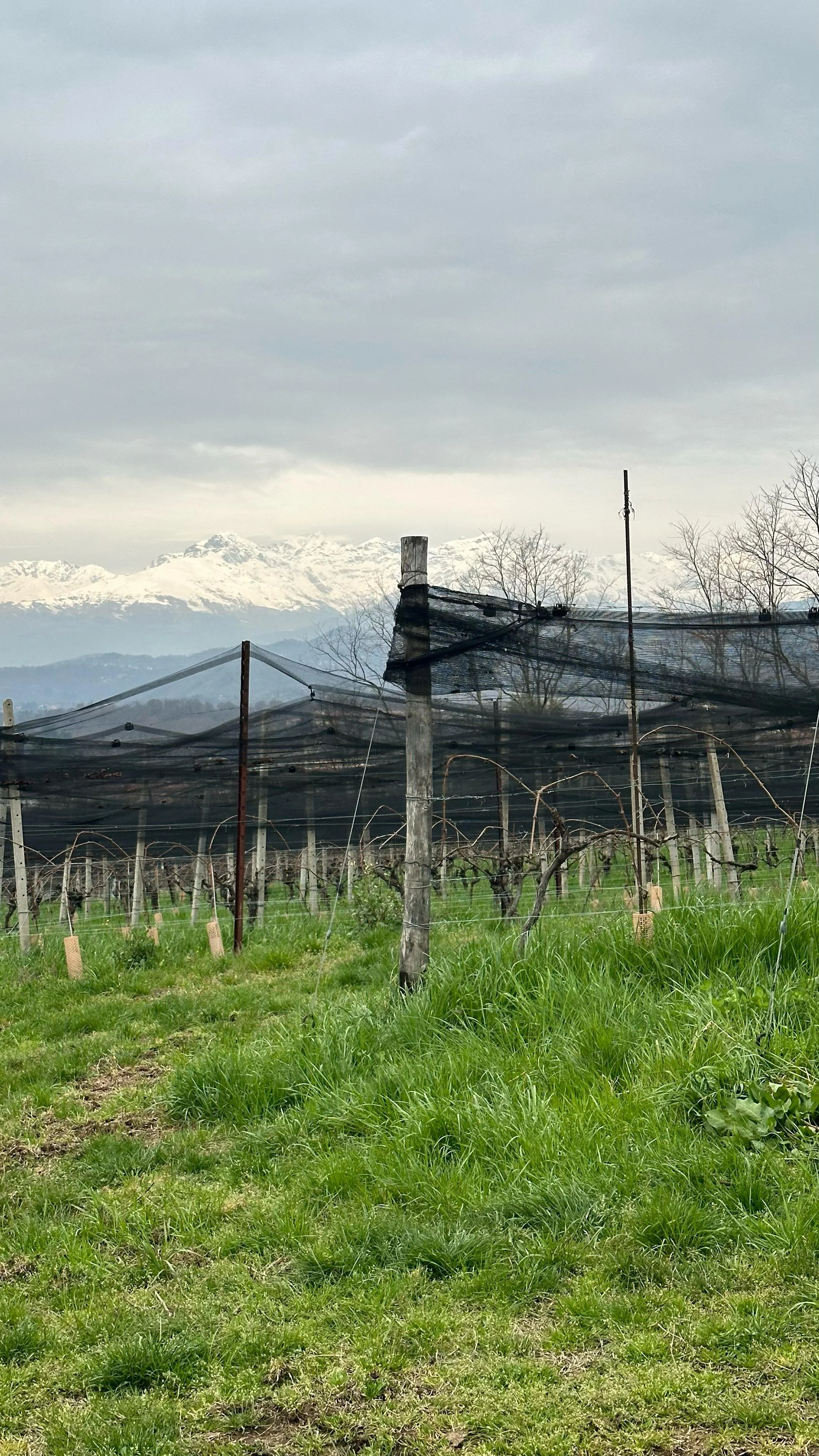Alto Piemonte and Other Wines from the Mountains
/When people think of Piedmontese wine, the mind usually jumps straight to Barolo and Barbaresco, nestled in the rolling hills of the Langhe. But today, I want to introduce you to one of the region’s most fascinating and underexplored wine areas: Alto Piemonte.
Located at the foot of the Alps, Alto Piemonte boasts a rich winemaking tradition, breathtaking alpine landscapes, and volcanic soils that create some of the most distinctive wines in northern Italy. It’s a hidden gem now experiencing a true renaissance, thanks to a passionate new generation of winemakers and a renewed appreciation for indigenous grape varieties like Spanna (the local name for Nebbiolo).
In this guide, we’ll explore the territory and the main wine denominations of Alto Piemonte, from Lessona to Boca and beyond.
The Territory of Alto Piemonte
Where is Alto Piemonte?
Alto Piemonte lies in the northern part of Piedmont, between the provinces of Novara, Vercelli, and Biella. The region is framed by Lake Maggiore to the west and the towering Monte Rosa massif to the north — a true guardian of these mountain vineyards.
A Supervolcano Shaped the Soil
One of the most extraordinary aspects of Alto Piemonte is its geological history. In 2009, geologists discovered a fossilized supervolcano in the Valsesia area, a massive caldera that collapsed around 278 million years ago. The collision between the African and European tectonic plates, which formed the Alps, also exposed the ancient magmatic system that now lies at the surface.
This means the soils here are acidic, mineral-rich, and almost completely free of limestone, unlike the marl, clay, and calcareous soils found in the Langhe. This unique terroir contributes to the freshness, minerality, and elegance of Alto Piemonte wines.
Historical Winemaking Roots
Viticulture in Alto Piemonte likely dates back to the Roman era. The region flourished during the Middle Ages under the stewardship of noble families, and by the 1800s, there were over 40,000 hectares of vineyards planted, primarily with Nebbiolo. Sadly, the area suffered a massive decline due to phylloxera and rural depopulation.
Now, thanks to dedicated winemakers who value sustainable practices and native grapes, Alto Piemonte wines are thriving again.
The Wines of Alto Piemonte
Let’s explore the main Alto Piemonte DOC and DOCG wine denominations — moving from west to east — and uncover the unique soils, grapes, and characteristics of each.
Note: Throughout this article, we’ll refer to Nebbiolo by its local name, Spanna.
Lessona DOC
Lessona, located in the province of Biella, sits on the outer edge of the ancient supervolcano’s influence. The sandy, marine sediment-rich soils with porphyry and mineral content make this one of the most elegant expressions of Spanna.
DOC status: Since 1976
Grapes: Minimum 85% Spanna; up to 15% Vespolina and/or Uva Rara
Wine profile: Elegant and mineral, with soft tannins and floral notes of violet
Fun Fact: Quintino Sella, an Italian statesman, famously toasted with Lessona to the first unified Italian government in 1861.
Bramaterra DOC
Bramaterra has ancient origins tied to freed feudal serfs who began cultivating vines in this area. The name means “to yearn for the land” — a nod to its agricultural devotion.
DOC status: Since 1979
Grapes: 50–80% Spanna, up to 30% Croatina, up to 20% Vespolina and/or Uva Rara
Soil: Porphyry, quartz, marine sediments, and rare limestone pockets
Wine profile: Fruity, mineral, with firm structure and aging potential
This wine is made in seven municipalities near the Baragge Natural Park, beneath Monte Rosa.
Boca DOC
One of Alto Piemonte’s most intriguing wines, Boca comes from an area outside the caldera but still influenced by its geology. The soils are lean and rich in soft pink porphyry, giving the wines complexity and finesse.
DOC status: Since 1969
Grapes: 70–90% Spanna, up to 30% Vespolina and/or Uva Rara (Bonarda Novarese)
Wine profile: Elegant, intense aromas, smooth tannins, and excellent age-worthiness
Boca wines are made from hillside vineyards around five villages, at altitudes of around 450 meters (1475 feet).
Sizzano DOC
Sizzano was a favorite of Count Cavour, who likened its bouquet to that of Burgundy and famously paired it with finanziera, a traditional Piedmontese dish.
DOC status: Since 1969
Grapes: 50–70% Spanna, 30–50% Vespolina and/or Uva Rara; up to 10% other local red grapes
Soil: Pebbly subsoil beneath a thin clay layer
Wine profile: Floral, structured, savory, with notes of violet
Fara DOC
Fara has been known since the Middle Ages as a wine of religious and noble significance. Its vineyards supported both monasteries and local economies.
DOC status: Since 1969
Grapes: 50–70% Spanna, up to 50% Vespolina and/or Uva Rara; 10% other red grapes allowed
Wine profile: Approachable and fresh, with good structure and floral aromatics
Despite having a lower percentage of Nebbiolo compared to other Alto Piemonte wines, Fara is highly drinkable even when young — a perfect introduction for newcomers to the region.
Why Alto Piemonte Deserves Your Attention
The wines of Alto Piemonte represent a rare combination of volcanic soils, indigenous grapes, and alpine terroir. They offer a fresher, more mineral-driven expression of Nebbiolo, distinct from the powerful wines of Barolo or Barbaresco.
If you’re a wine lover seeking something new yet deeply rooted in Italian history, exploring Alto Piemonte is a must. Whether you’re sipping a refined Lessona or discovering the power of Boca, these wines tell a story of survival, identity, and transformation.
Plan a Visit to Alto Piemonte
Interested in visiting? Reach out to us for tailored wine tours through Alto Piemonte and other hidden gems of northern Italy. Discover small family-run wineries, scenic vineyards, and the magic of mountain-grown wines.
OR - Join me on our Nebbiolo Madenss tour, more info here!



